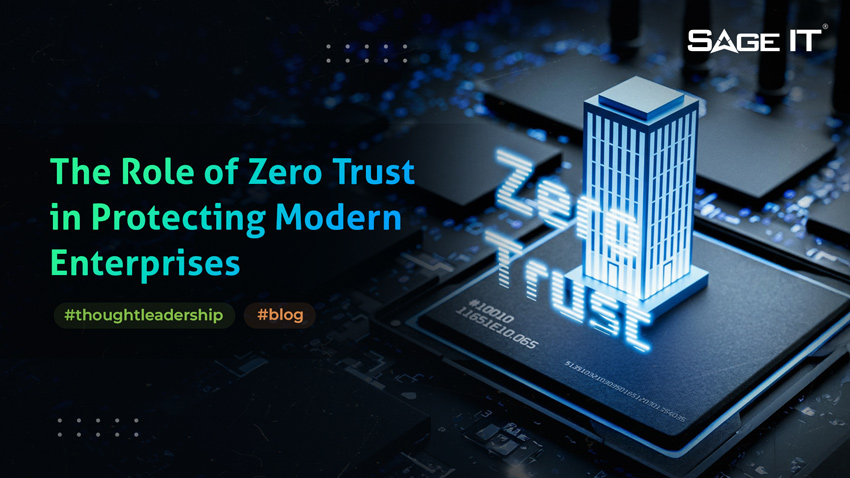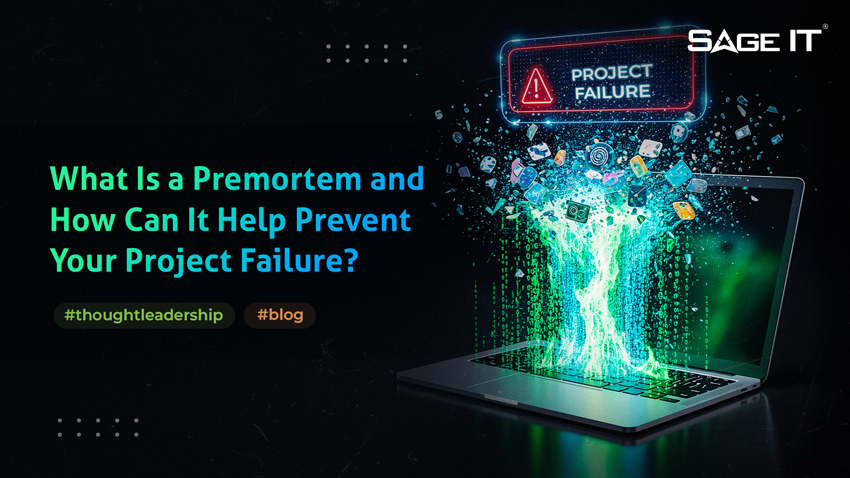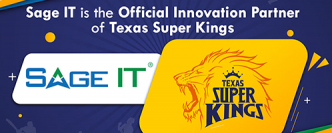Executive Summary
In a digital world shaped by hybrid work, cloud adoption, agentic AI, and increasingly sophisticated cyber threats, the traditional security perimeter has all but vanished. Enterprises can no longer rely on a “castle-and-moat” model where everything inside the network is trusted. The reality is stark: your network has no edge, your users are everywhere, and your data moves fast.
Enter Zero Trust, a modern security architecture built on a foundational principle: “Never trust, always verify.” This strategic cybersecurity framework represents a paradigm shift from traditional models that assume users and devices inside the corporate network are trustworthy. As cyber threats continue to grow more sophisticated and frequent, adopting a Zero Trust approach has shifted from being a strategic choice to an absolute necessity for enterprises determined to safeguard their critical assets.
Understanding Zero Trust: A Paradigm Shift in Cybersecurity
What is Zero Trust?
Zero Trust is a security framework that assumes no user, device, application, or workload should be trusted by default, even if it’s inside your organization’s perimeter. Every user, device, and application must be continually verified before accessing resources, no matter where they are, whether inside or outside the organization’s network. Unlike traditional models that assume implicit trust, Zero Trust eliminates this concept entirely, operating on the principle that “every user and device is a potential threat until proven otherwise.”
Core Principles of Zero Trust
Several key principles form the foundation of any Zero Trust architecture:
Why Traditional Security Is No Longer Enough
The Erosion of the Traditional Network Perimeter
With the growth of cloud computing, remote work, bring-your-own-device (BYOD) policies, and third-party integrations, the traditional concept of a fixed network perimeter has effectively vanished.Employees now access applications from various locations and devices, making perimeter-based defenses insufficient and creating a fluid, porous security environment.
Rising and Evolving Cyber Threats
Cyberattacks are growing increasingly advanced and expensive, with global losses projected to hit $10.5 trillion by 2025. The emergence of autonomous and agentic AI systems introduces new risks, as these systems, if misused or compromised, can cause damage autonomously unless tightly governed and validated.
Insider Threats & Lateral Movement
Whether accidental or malicious, threats from within the organization can be as damaging as external attacks. Once inside traditional networks, attackers can move undetected. Zero Trust minimizes this risk by enforcing strict access controls for everyone, ensuring users cannot access data or systems beyond their privileges.
Siloed Security Tools
Disconnected security tools lead to blind spots and fragmented protection. Zero Trust mandates holistic visibility and unified policy enforcement, addressing the limitations of traditional, piecemeal security approaches.
Key Pillars of a Zero Trust Architecture
1. Identity & Access Management (IAM)
In Zero Trust, identity becomes the new perimeter. Key implementations include:
- Enforcing strong Multi-Factor Authentication (MFA) for all users
- Implementing adaptive access controls based on risk and context
- Using role-based access control (RBAC) and just-in-time (JIT) principles
2. Device Security
Ensure every device accessing the network is managed and compliant with security policies:
- Continuously validate device posture (patch level, encryption status)
- Employ Endpoint Detection and Response (EDR) tools
- Restrict access for non-compliant or unmanaged devices
3. Network Segmentation & Micro-Segmentation
Microsegmentation involves breaking networks into small, isolated zones:
- Create isolated segments to limit lateral movement
- Apply dynamic, context-aware policies between workloads
- Each segment has strict access controls to contain breaches
4. Data Security
Protect sensitive information throughout its lifecycle:
- Classify, label, and encrypt data
- Implement Data Loss Prevention (DLP) and inline monitoring
- Ensure protection for data both at rest and in transit
5. Application & Workload Security
Secure all applications and workloads:
- Deploy Web Application Firewalls (WAFs) and runtime protection
- Use identity-aware proxies and secure APIs
- Implement Zero Trust Network Access (ZTNA) for secure application access
6. Visibility & Analytics
Enable continuous monitoring and threat detection:
- Leverage SIEM, UEBA, and XDR tools for anomaly detection
- Provide instant visibility across network operations and user activities.
- Continuously audit behaviors and generate actionable insights
Table: Key Technology Pillars for a Zero Trust Architecture
| Pillar | Objective | Example Technologies |
| Identity | Verify and secure every user | MFA, IAM, Single Sign-On (SSO) |
| Devices | Ensure device health and compliance | EPP, EDR, Mobile Device Management |
| Applications | Secure application access | ZTNA, API security gates, WAF |
| Data | Protect sensitive information | DLP, Encryption (at rest & in transit) |
| Network | Segment and control traffic | Microsegmentation, Next-Generation Firewalls |
| Visibility & Automation | Monitor and respond to threats | SIEM, SOAR, XDR |
Zero Trust in Action: Real-World Implementations
Manufacturing Case Study
A global manufacturing client adopted Zero Trust with SageIT’s guidance. With distributed plants and remote engineers, they implemented:
Result: 78% reduction in attack surface and real-time alerting for anomalous access behaviours.
Microsoft’s Zero Trust Journey
Microsoft’s internal implementation of Zero Trust offers valuable insights from their seven-year journey:
Implementation Framework: How SageIT Enables Zero Trust for Modern Enterprises
- Zero Trust Assessment & Strategy
- Gap analysis of current security posture
- Maturity model mapping and roadmap creation
- Executive-level alignment and buy-in
- Architecture Design & Implementation
- Integration with IAM, EDR, SASE, ZTNA, SIEM
- Azure AD, Okta, AWS/Azure/GCP native security tooling
- Support for both greenfield and brownfield environments
- Agentic AI & Zero Trust Alignment
- Agent-level identity and access controls
- Prompt and decision flow validations
- Real-time AI agent monitoring in Zero Trust models
- Compliance & Governance
- Align with frameworks like NIST 800-207, ISO 27001, SOC 2
- Automated audit trails and policy enforcement
- Data classification and privacy controls
- Organizational Change & Training
- End-user training on secure behaviors
- CISO and SOC enablement
- Executive board briefings on Zero Trust risk reduction
Result: 78% reduction in attack surface and real-time alerting for anomalous access behaviours.
Overcoming Common Implementation Challenges
While powerful, implementing Zero Trust comes with hurdles that organizations must navigate:
The Future of Enterprise Security is Zero Trust
As enterprises continue to embrace cloud, IoT, and AI, the attack surface will only expand. In this landscape, Zero Trust is no longer a luxury but a strategic imperative. It provides a resilient, adaptive framework that can protect modern digital businesses against evolving threats.
The tangible benefits of Zero Trust adoption are clear:
Conclusion
Zero Trust isn’t a product, it’s a paradigm shift. It enables organizations to operate with agility and confidence, knowing that trust is always earned, not assumed. In a world of hybrid threats, hybrid workforces, and intelligent agents, Zero Trust is no longer optional, it’s essential.
The journey to full Zero Trust maturity is ongoing, but every step taken significantly strengthens an organization’s security posture. By beginning with a well-defined strategy, prioritizing key assets, and utilizing the appropriate technologies, modern organizations can establish a strong security framework built on the core principle of “never trust, always verify.












